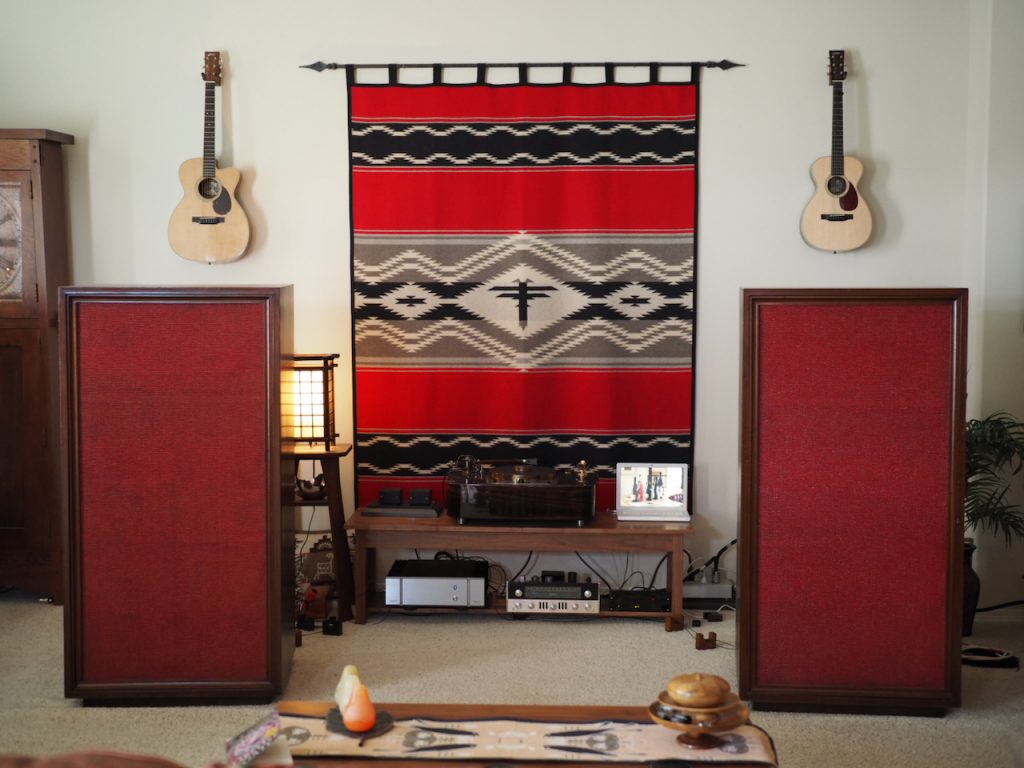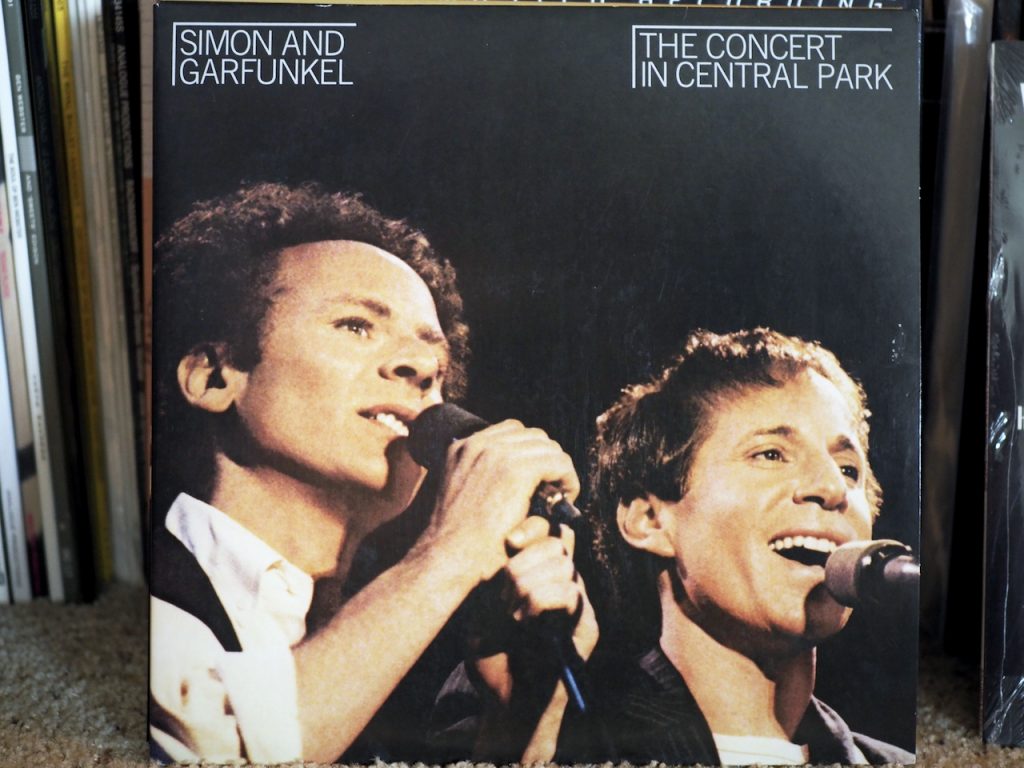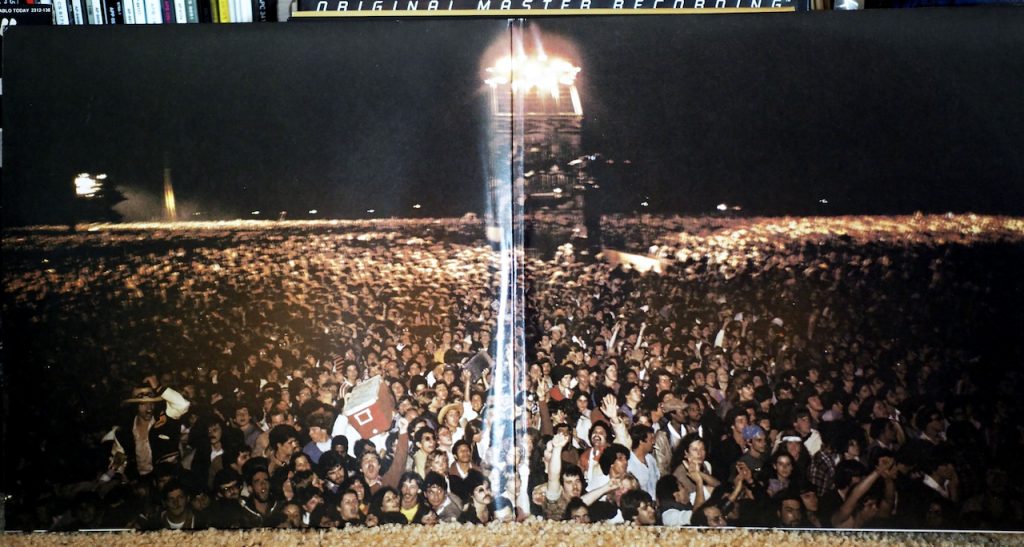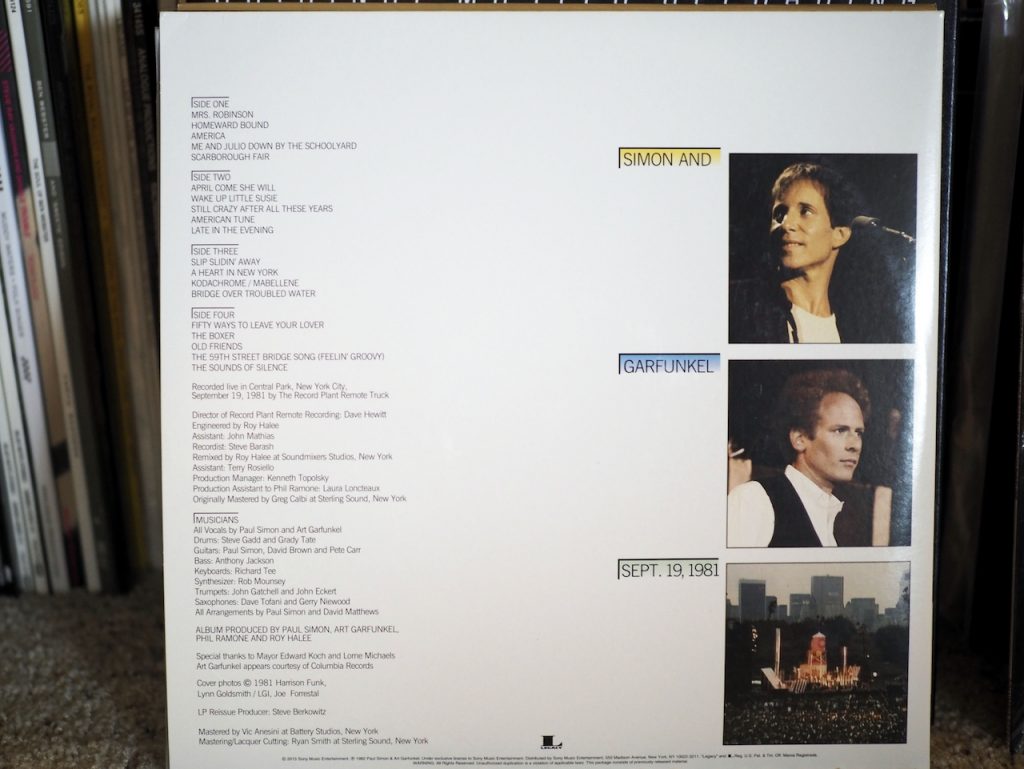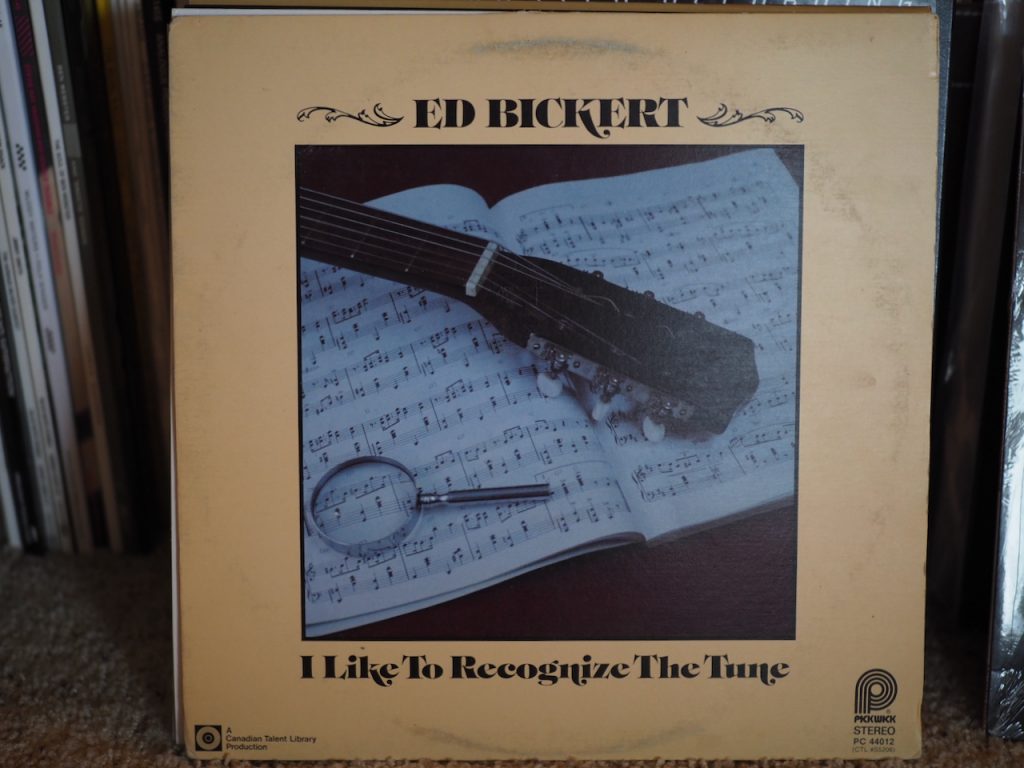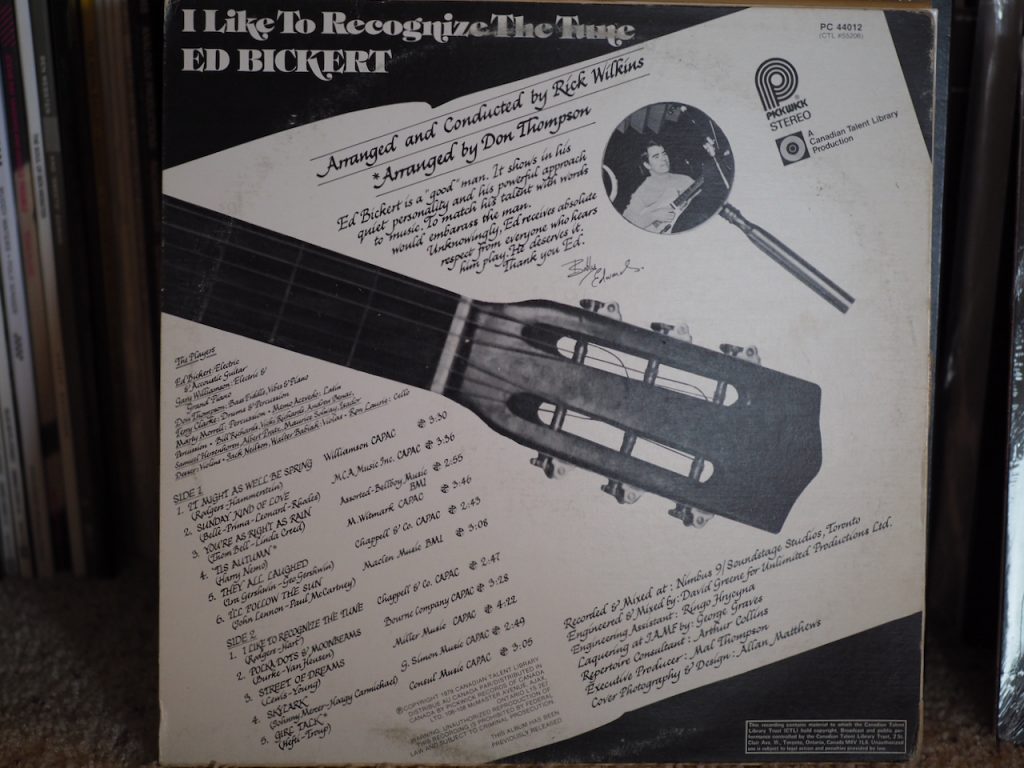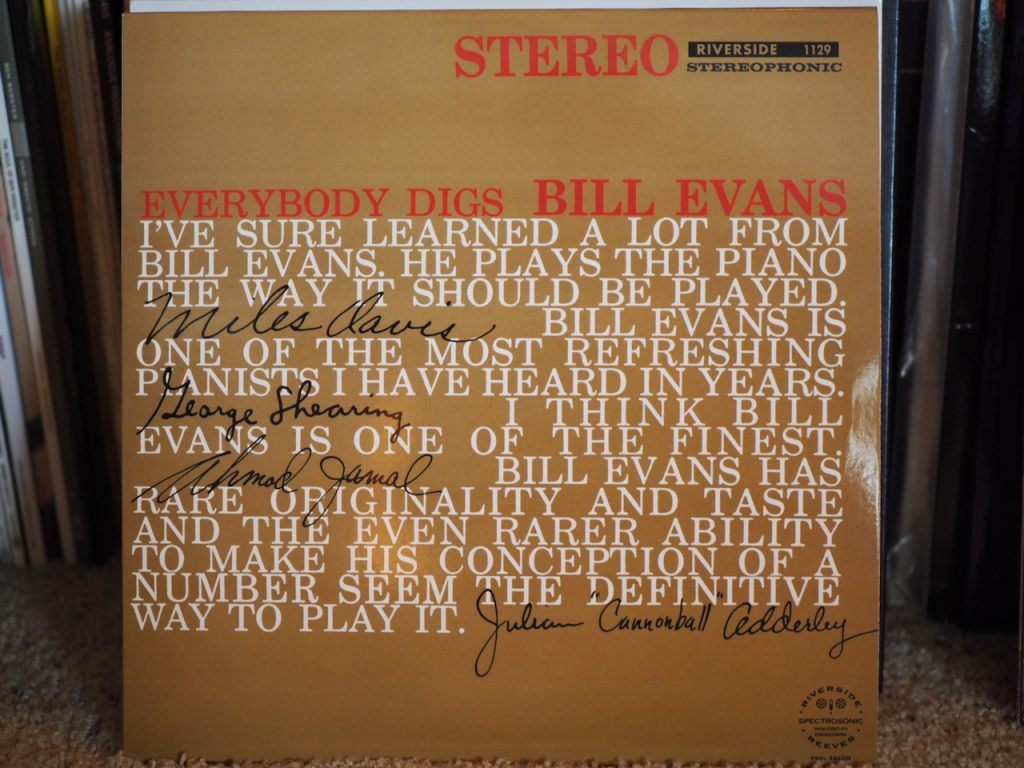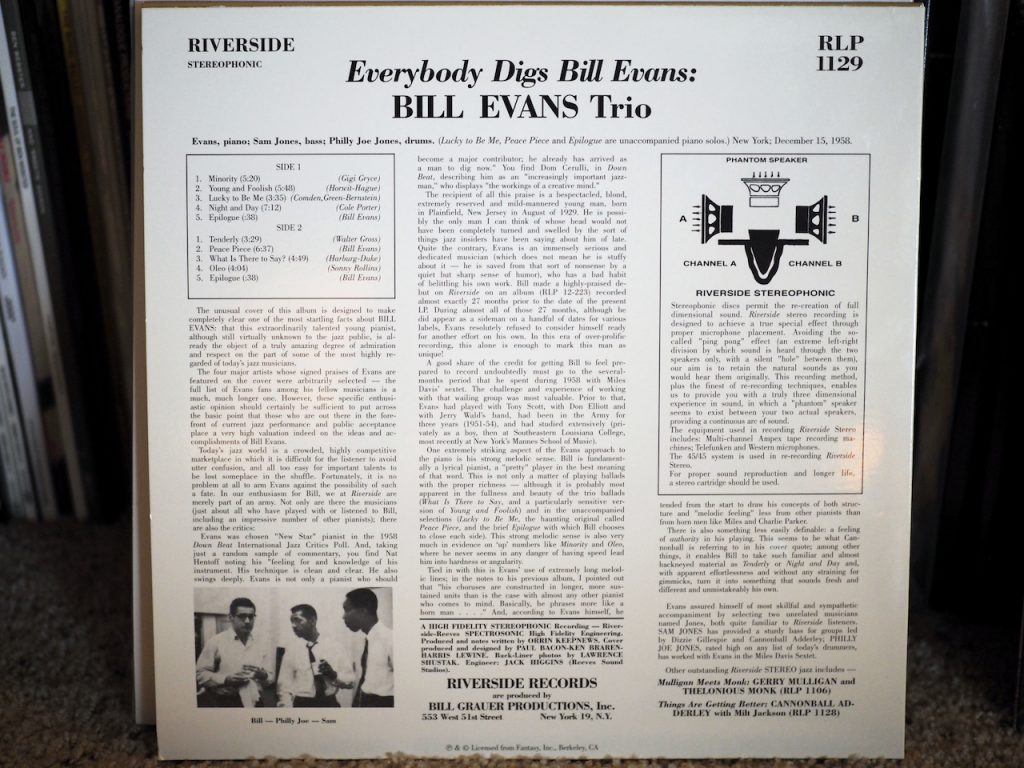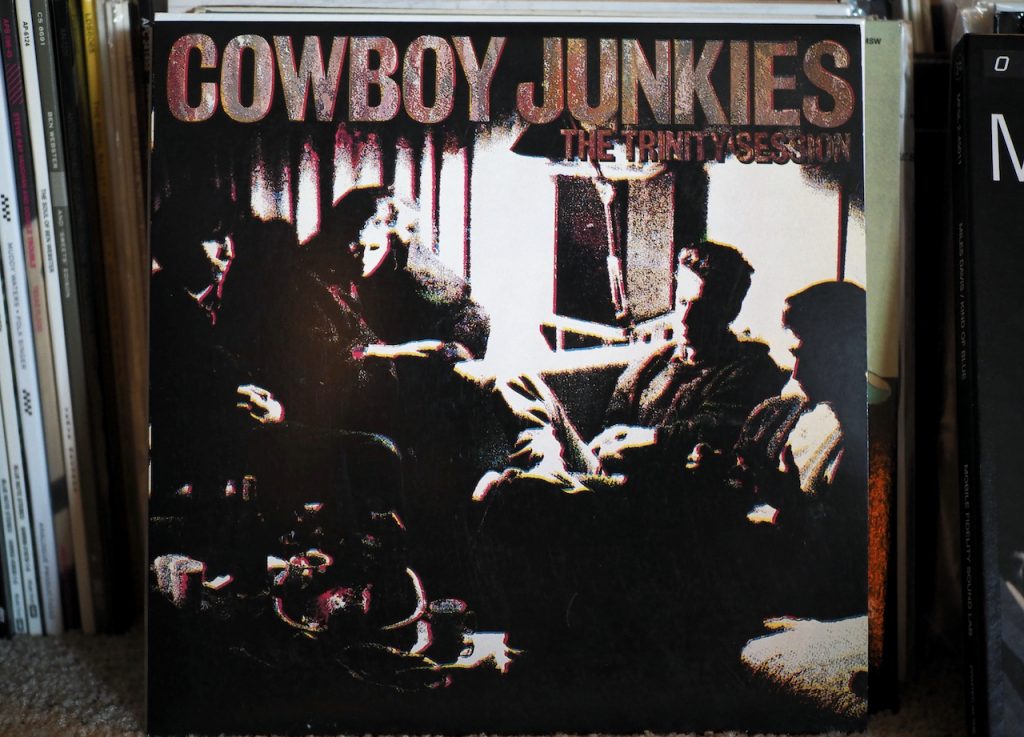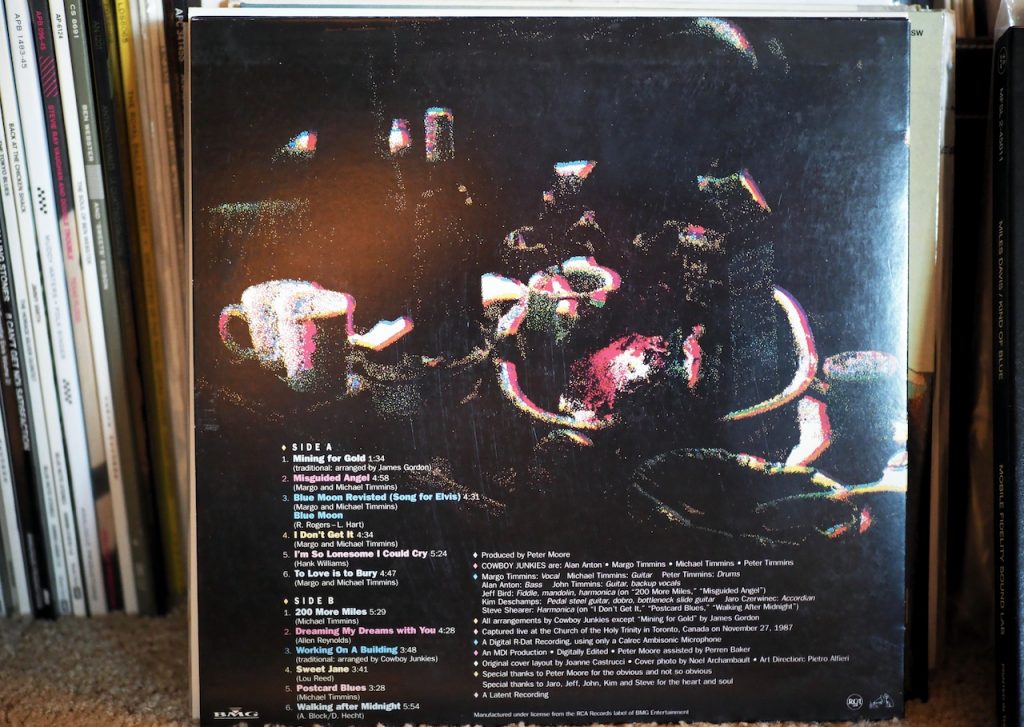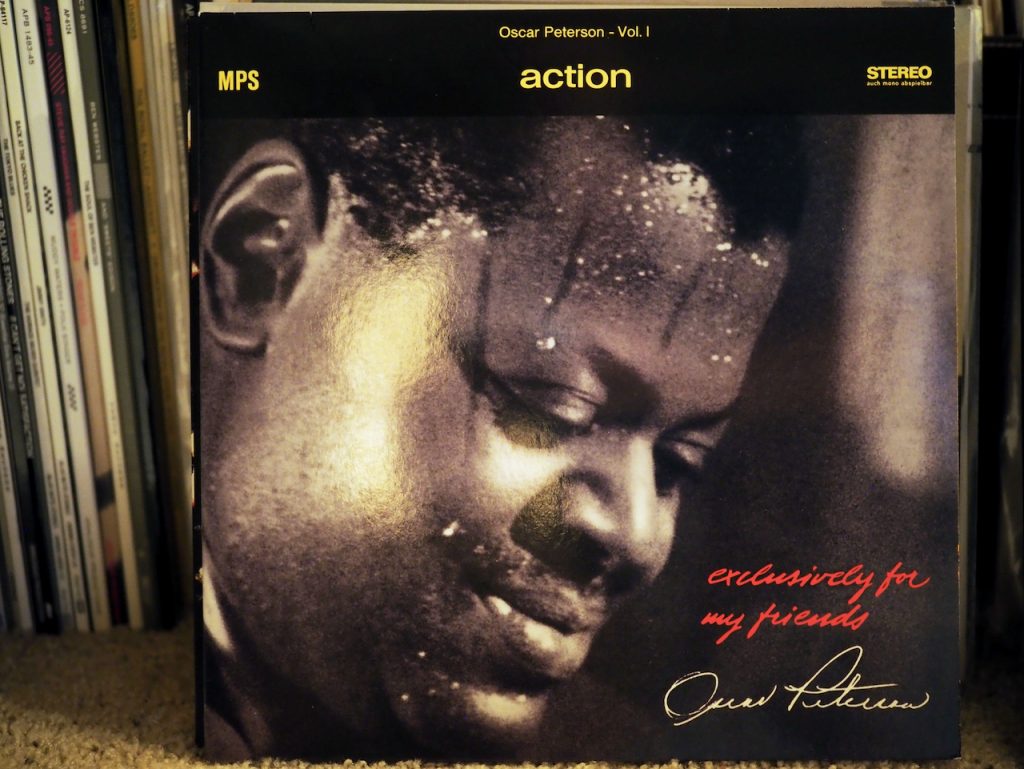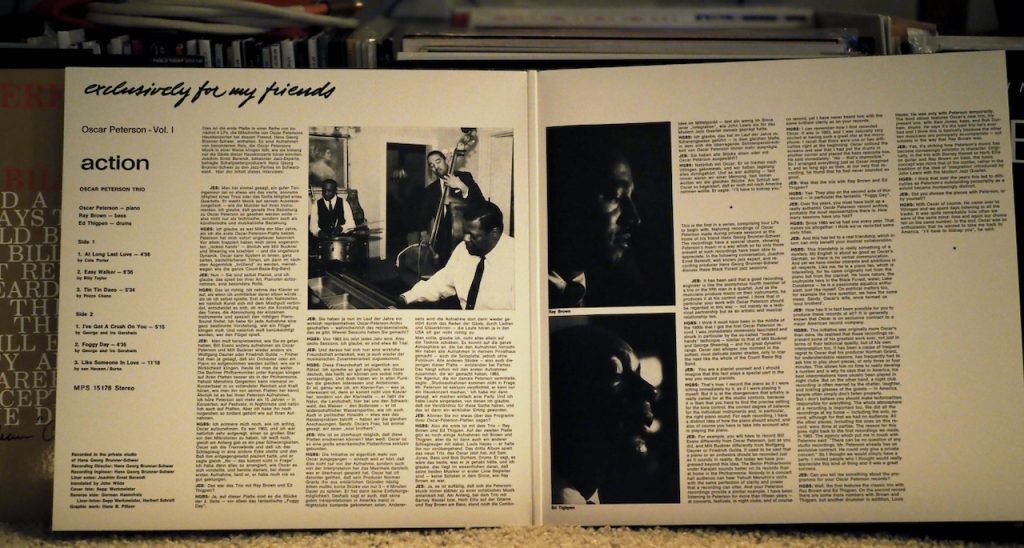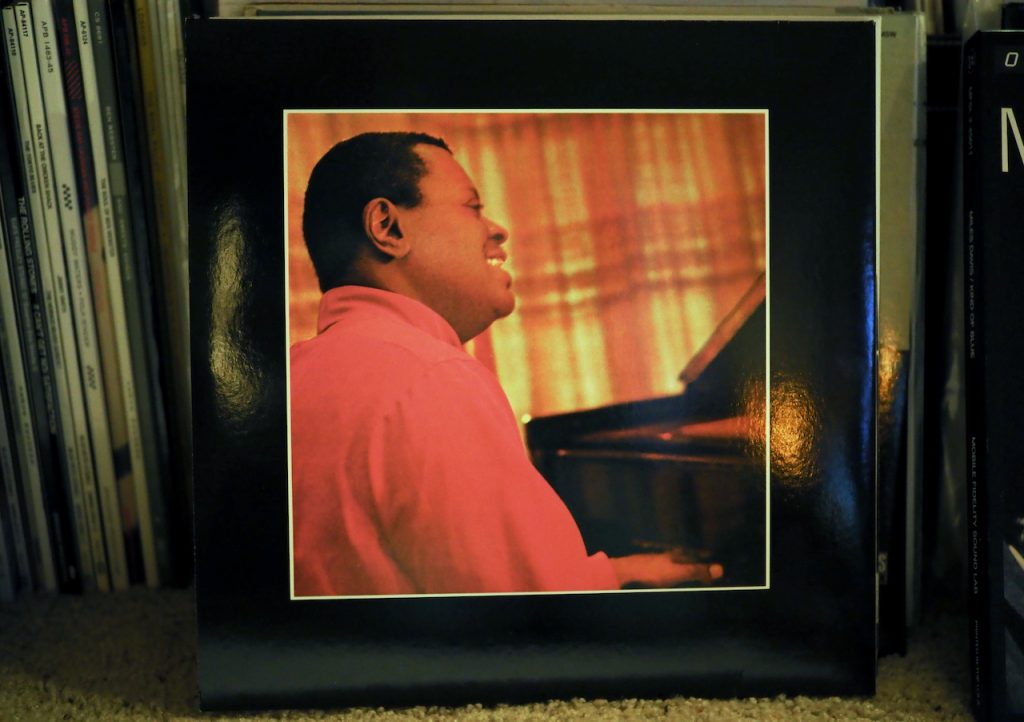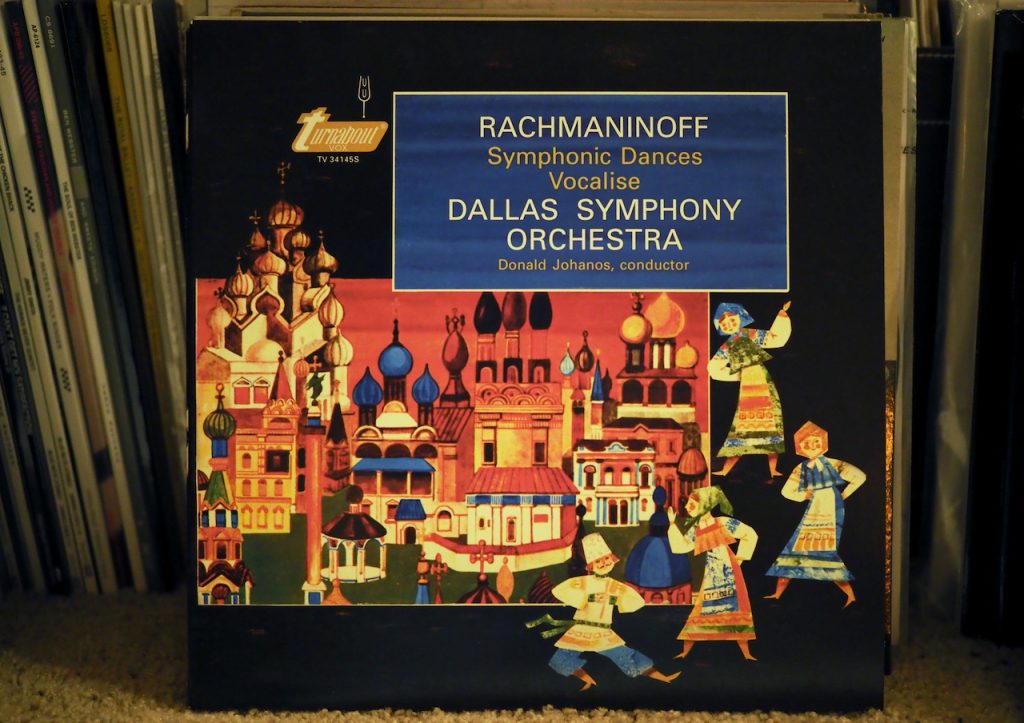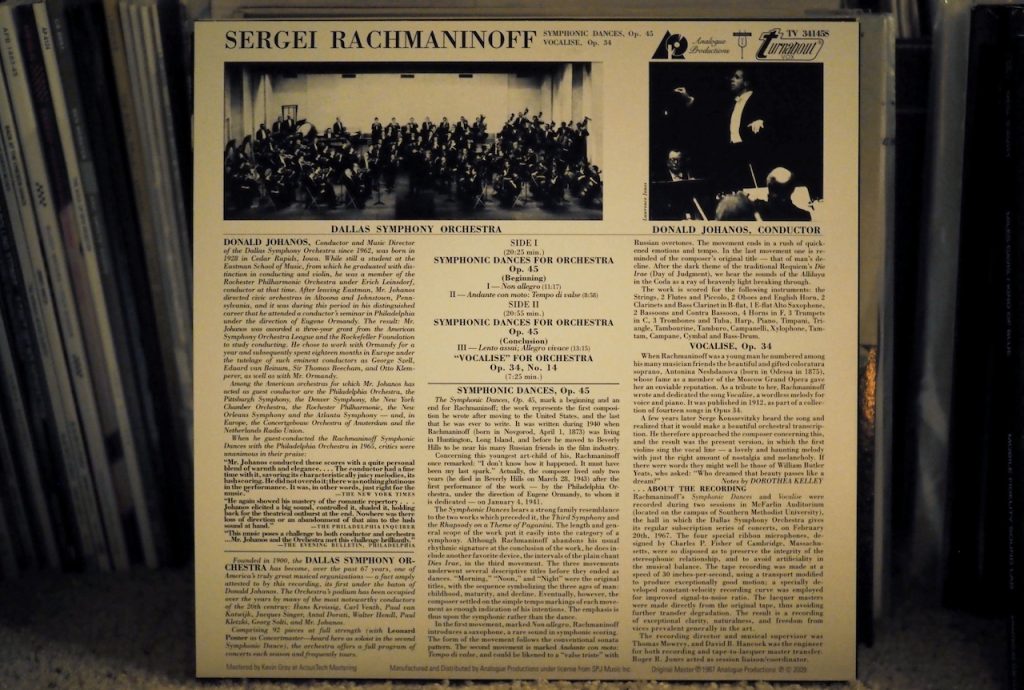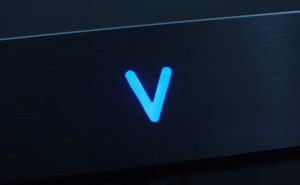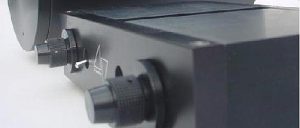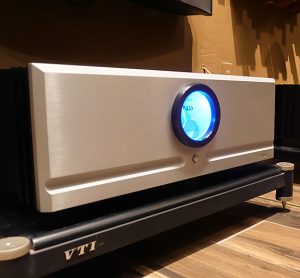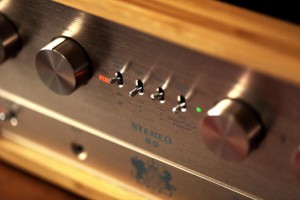I had also hoped to try the Pass Labs XA25 with my Tannoy Westminster Royal SE loudspeakers, as they are a more revealing and difficult to drive than the Altec's, and they would have been a good test of the Pass Labs XA25 stereo amplifier.
However, I have another article coming directly upon the heels of this article that will involve substituting the vintage Altec drivers in my "Stokowski" Altec's with the latest Great Plains Audio (nee Altec) drivers, which means the logistics of moving these two massive pairs of speakers around in such short order and swapping drivers for listening comparisons with the XA25 was not practical, so I didn't do a "West' Test" with the XA25 this time around.

Speaker cables were the Duelund DCA16GA tinned-copper speaker cables, and interconnects were Duelund DCA16GA tinned-copper cables, one pair terminated with the new Duelund plastic-free RCA connectors, and one pair terminated with the previous model of Duelund RCA connectors.
My wall outlets are Acoustic Revive customized Oyaide R-1 outlets fitted with Acoustic Revive CB-1DB Receptacle Base Plates and CFRP-1F Carbon Fiber Outlet Plates. From the wall outlet an Acoustic Revive Absolute Power Cable provides AC to an Acoustic Revive RPT-6 Absolute NCF Power Distributor, which distributes AC to the DAC and amplification components via Acoustic Revive Absolute Power Cables. My turntable connects to the Acoustic Revive RPT-6 Absolute NCF Power Distributor with a combination of an Acoustic Revive RAS-14-TripleC NCF Power Stabilizer and a Furutech G-320Ag-18 power cable.
Other accessories included two Acoustic Revive RWL-3 Acoustic Conditioners for room treatment, Acoustic Revive RR-77 and RR-888 Schumann Ultra Low-Frequency Pulse Generators, and Acoustic Revive Quartz Under-Boards under the Intact Audio SUTs and the Acoustic Revive RPT-6 Absolute NCF Power Distributor.
Listening Impressions of the Pass Labs XA25 Stereo Amplifier
Here are a couple of preliminary suggestions that'll help you get the best out of your new Pass Labs XA25 Class A stereo amplifier in your own listening sessions.
First, I found the Pass Labs XA25 sounded a little forward and brash until it had adequate run-in time on it, about 300 hours of playing time, give or take. Around 200 hours of run-in time the XA25 started to smooth out noticeably, and by 300 hours of run-in time I thought it was baked to perfection.
One owner told me his XA25 continued to improve all the way up to the 1000-hour mark, but by 300 hours I was already impressed by the XA25's performance, so any improvement beyond that I figured would just be icing on the XA25's performance cake.
So, the moral of this story is that you shouldn't get too excited if your XA25 doesn't sound silky smooth cold out of the box, as it will after you give it adequate run-in time (not unusual for amplifiers or audio electronics in general).
Second, I found the Pass Labs XA25 needs an hour of warm-up while playing music to sound its considerable best. I streamed Jazz24 for an hour or more prior to my vinyl listening sessions to get the XA25 into its best form (again, this not unusual for amplifiers or audio electronics in general).
Thirdly, the Pass Labs XA25 owner's manual states that "The amplifier is designed to perform well with the included power cord …," and that is no doubt true, but I also found that both my Acoustic Revive and Sablon Audio power cords enhanced the performance of the XA25.
After the Pass Labs XA25 amplifier had run-in, it settled into a rather remarkable level of performance, and impressed me more than any amplifier I've yet heard on my Duelund-ized "Stokowski" Altec's.
The Musicality Characteristics of the Pass Labs XA25
Ok, after that general introduction to the performance of the Pass Labs XA25, lets drill down in reductionist fashion, and discuss the musicality of the XA25 in terms of its characteristics on the fundamental attributes of music.
So how well does the Pass Labs XA25 take recorded music and portray it compared to live music in terms of timbre (the unique 'voices' of instruments), resolution of tone color (the ability to distinctly hear the chordal variations resulting from adding additional pitches to three tone triads), melody (the tune you 'whistle while you work'), harmony (treble & bass accompaniments to the melody), rhythm (the steady beat that determines the tempo), tempo (speed), dynamics (variations in loudness), and loudness (the ability to play naturally at live-like levels appropriate to a piece of music)?
Simon and Garfunkel's The Concert In Central Park is one of my favorite live albums with its great music and live & billowing atmosphere, and of course my enjoyment of Simon and Garfunkel's music is no doubt buoyed by my growing up with it as a youngster, and interpreting their beautiful and powerful lyrics as the latest poetic expression of music that provided "meaning and truth" to a generation of young people looking for answers to the meaning of life during and after the Vietnam War.
The Concert In Central Park also makes for a great album for checking out timbre with Simon and Garfunkel's vocals and the variety of instruments being played.
Speaking of vocals, not only does the Pass Labs XA25 get the vocals right in timbre, but it also unravels Simon and Garfunkel's beautiful harmonies easily, with all their nuance and passion in full display, while sounding natural without even a trace of unnatural sibilance.
The saxophones, guitars, drums, bass, keyboards, synthesizer, and trumpets all passed the timbre test too, with the Pass Labs XA25, all sounding within the believable timbral range for those instruments.
The Concert In Central Park songs are also full of beautiful melodies, compelling rhythm playing, and driving bass beats, and the Pass Labs XA25 makes them bloom in all their musical beauty, much like I hear in life with live music.
Have you ever noticed that with some audio gear that every record you put on sounds like the tempo is slower than it should be, or faster than it should be, homogenizing the intended emotional impact of the music?
Not so with the Pass Labs XA25, where the tempo of every song on The Concert In Central Park comes through clearly, informing the emotional feel of the music, whether it's a lively and fast tempo that lends excitement to the music, or a slower tempo that complements a more romantic or introspective song.
Now let's talk about dynamics, which is a particularly strong point of the Pass Labs XA25's performance.
The combination of the deceptively powerful Pass Labs XA25 amplifier—"The Little Engine That Could"—and the high-sensitivity Altec's easily provided the full spectrum of dynamic performance while I was listening to music, whether it was on the subtle gradations of pianississimo, or the "hang onto your hat" blasts of fortississimo, and even at live-like sound pressure levels (SPLs) the XA25 created a dynamic realism that was breathtaking in the same way that dynamics in live music are.
That's a big deal from a performance standpoint, as live-like dynamics are one of the three primary factors for getting reproduced music to sound and "feel" like live music in the home (the other two being "presence" and "tone"), and the Pass Labs XA25 provides the full spectrum of dynamics that made the melodies, beat, and rhythm of The Concert In Central Park full of life and emotionally engaging.
With my Duelund-ized Altec's, the Pass Labs can play so loud on big dynamic swings that I had to be a little careful setting the initial volume. If I set the volume too loud, the XA25 was so powerful that it was scary at times, and I had to jump up and turn down the volume for fear of blowing a driver, as my Altec drivers are rated at 30 watts (a crazy amount of power to put into such sensitive drivers), and the XA25 could easily hit that before clipping.
When I exercised prudence, and set the volume of the XA25 to live-like levels appropriate for the music there was no worries, and the music had such a live sound and feel that it was extraordinarily engaging, and it made listening to The Concert In Central Park feel like I was there in person at the concert on September 19, 1981.
When listening for tone color—the chordal variations resulting from adding additional pitches to three tone triads—my go-to music is jazz, which is full of tone color in the form of Major 7ths, Major 6ths, minor 7ths, minor 6ths, Dominant 7ths, diminished, half-diminished, augmented, 9ths, 11ths, and 13ths, and inversions of those chords, for example.
One of my favorite jazz guitarists was Canadian Ed Bickert (11-29-1932 to 2-28-2019). Remarkably, Ed played a Fender Telecaster, and his skill was so enormous that he could play that Telecaster and make it sound like a classic Gibson L5 archtop jazz guitar. In fact, you may have heard Ed playing on Paul Desmond's Pure Desmond and never realized it was Ed playing his Telecaster, just assuming it was someone really good playing an L5. Ed knew how to play his guitar to achieve beautiful tone.
There's a number of good Ed Bickert albums, but for this listening session I got out Ed's I Like to Recognize The Tune album. Ed mostly improvises around the melody on the songs of I Like to Recognize The Tune, but the songs where Ed plays chord melody, the Pass Labs XA25 let me hear the tone color coming through in full resolution, which helped inform the feel of the jazz being played, and highlighted the artistic creativity of Ed as he played.
Bill Evan's Everyone Digs Bill Evans is an album of beautiful music that really demonstrates tone colors with a lot of chord inversions, and is just fun to listen to. Like with Ed's I Like to Recognize The Tune album, the Pass Labs XA25 Class A stereo amplifier does a superb job of resolving all the notes that contribute to tone color in the Everyone Digs Bill Evans album, making the music more beautiful and emotive, and highlights Bill's incredible talent on the piano.
With respect to the attributes of musicality, the Pass Labs XA25 Class A stereo amplifier excels in every attribute, whether its timbre, resolution of tone color, melody, harmony, rhythm, tempo, dynamics, or playing naturally at live-like SPLs, and puts it all together to paint a breathtakingly beautiful and emotive listening experience.
On a scale of "one" to "ten" for its musicality performance, the Pass Labs XA25 Class A stereo amplifier was easily a "ten."
The Visuospatial Characteristics of the Pass Labs XA25
Now that we've talked about the XA25's musicality characteristics, lets drill down again in reductionist fashion and discuss the visuospatial characteristics of the XA25.
Visuospatial performance tends to be the audiophiles' playground, whose performance characteristics don't relate to music per se, but to performance related to the non-musical artifacts of the recording process, like transparency (the ability to 'see' into the recording), resolution (the amount of detail in the audio signal that is audibly presented), soundstage (the ability to discern the three dimensions of the recorded space in width, height and depth), the soundspace (the ability to convey the acoustic sense of 'space' of the recording venue), and imaging (the ability to localize instruments & musicians on the soundstage).
Performance related to visuospatial characteristics can make listening to recorded music more enjoyable when they are presented in a natural sounding fashion that complements the music.
However, when visuospatial characteristics are overtly exaggerated in such a way that they distract from a naturally live-like presentation of the music, then they can decrease emotional engagement and overall enjoyment of the music listening experience.
The Cowboy Junkies' The Trinity Session has been an audiophile favorite since its release in 1988 due to its excellent recording quality, huge church acoustic, and the superb country-blues music-making of Margo Timmins (vocals), Peter Timmins (drums), Michael Timmins (guitar), John Timmins (backing vocals, guitar), Kim Deschamps (pedal steel guitar, dobro, slide guitar), and Alan Anton (bass).
Remarkably, the Cowboy Junkies' The Trinity Session was recorded live at the Church of the Holy Trinity, in Toronto, Canada, using a single Calrec ambisonic microphone and a Sony DATman digital recorder, proof that it is possible to have an excellent recording from digital, and rather ordinary digital at that.
From Wikipedia, "He (producer Peter Moore) chose the Church of the Holy Trinity in Toronto for its natural reverb. To better persuade the officials of the historic church, Moore claimed "The Timmins Family Singers" were recording a Christmas special. The session began early on November 27, 1987. Songs with the fewest instruments were recorded first, and then the songs with gradually more complex arrangements. In this way Moore was able to solve acoustic problems one by one. To better balance Margo's vocals against the electric guitars and drums, she was recorded through a PA system left behind by a previous group. By making subtle changes in volume and placement relative to the microphone over six hours, Moore and the band finally reached the distinctive sound of the album."
The visuospatial performance of the Pass Labs XA25 stereo amplifier playing my LP of The Trinity Session displayed the huge sense of space and natural reverb of the Church of the Holy Trinity in all of its prodigious natural splendor, and you can even hear what I think was the HVAC system swooshing away in the background on "Mining for Gold."
Images are present across the full width of the recording's soundstage, but the reality of this recording was the musicians were grouped around the mic pretty closely, so you don't hear lots of depth in the recording.
The imaging is presented naturally by the Pass Labs XA25, and is somewhat diffuse, reverberating into the church's acoustic, about what I would suspect if you had been in the church listening the Cowboy Junkies play their music around a single microphone.
The Pass Labs XA25 is very transparent, resolving, and organic sounding tonally, which for The Trinity Session translated into a very intimate and nuanced musical performance, with guitars, bass, drums, etc., displaying beautiful timbral textures and gorgeous overtones that disappear out into the church's acoustic.
The next example record is from the fantastic MPS box set of Oscar Peterson's Exclusively for My Friends, which was recorded in private sessions at the home of his friend Hans Georg Brunner-Schwer over the period of 1963 to 1968, and was released in 1990.
The Volume I record Action, has Oscar Peterson playing piano, Ray Brown playing bass, and Ed Thigpen on drums, and the Pass Labs XA25 amplifier presented this superbly recorded music with beautifully natural tone, a life-like presence of the musicians in my living room, and live-like dynamics on the piano, bass, and drums.
The transparency and resolution of Pass Labs XA25 allowed me to hear all of the timbral and technique nuance as Oscar, Ray, and Ed played, with the end result being that the music sounded remarkably real and live-like.
This is a trio, so the soundstage sounded appropriate for a trio, with the Pass Labs XA25 filling my living room with life-like aural images of Oscar's piano, Ray's bass, and Ed's drums.
Given this was recorded at the home of Hans Georg Brunner-Schwer, I didn't hear a huge spacious acoustic like I did with The Trinity Session, but the acoustic I did hear was just like it should be, putting the artists in my room with the natural acoustic of the room it was recorded in.
This beautifully recorded boxset of Exclusively for My Friends is one of my most treasured sets of musical performances, and the Pass Labs XA25 was absolutely faultless with its presentation of the music and visuospatial elements of these recordings. Simply stunning all around.
My next example record is a more complex one, that of Rachmaninoff Symphonic Dances / Vocalise, by the Dallas Symphony Orchestra, with Donald Johanos conducting.
This audiophile classic was originally recorded on the Turnabout label (TV 34145S) and released in 1967, but the version I have is the superb 45 RPM Analogue Productions version from 2009.
The Acoustic Sounds website says about this album, "It quite simply does not get any better than this. This record has been lauded by every critic since 1967 as the closest thing to recorded perfection that exists. This is the record you put on to convince yourself that investing in that high-end system was in fact worthwhile. It will positively test the limits of any system. Dynamics, texture, colors, air, bass—everything! This one's got it all."
The Pass Labs XA 25 stereo amplifier was stunning on Rachmaninoff Symphonic Dances / Vocalise, with live-like dynamics, beautiful tone, lots of transparency, and resolution gave me a remarkable listening experience full of timbral textures, a full display of the musicians' technique with lots of nuance, and of course, superb imaging from a wide and deep soundstage with lots of layering of the instruments.
The recorded acoustic is natural and spacious sounding, and Acoustic Sounds is not kidding, this album will really tell you all about "Dynamics, texture, colors, air, bass—everything!" in your hifi system, and the Pass Labs XA25 was superb in portraying all of the musical and visuospatial elements of the album in breathtaking fashion.
To summarize, the Pass Labs XA25's performance on the visuospatial characteristics of transparency, resolution, soundstage, soundspace, and imaging were absolutely superb, always being presented in a believably lifelike fashion that enhance the music listening experience and never distracted from it. I have zero nits to pick with the Pass Labs XA25's visuospatial performance, it is about as ideal as I can imagine wanting from an amplifier.




